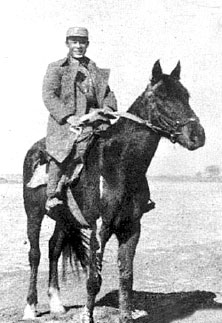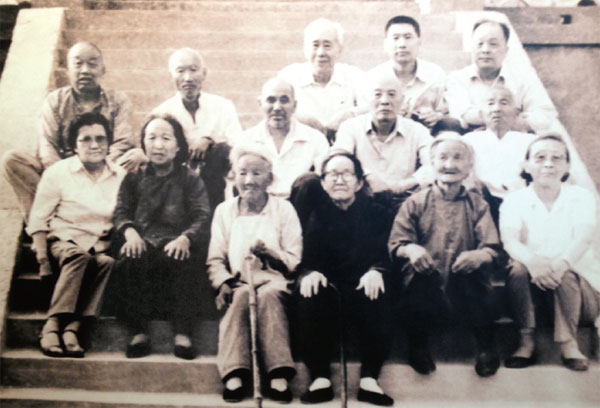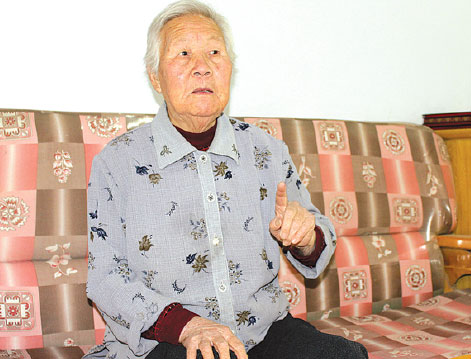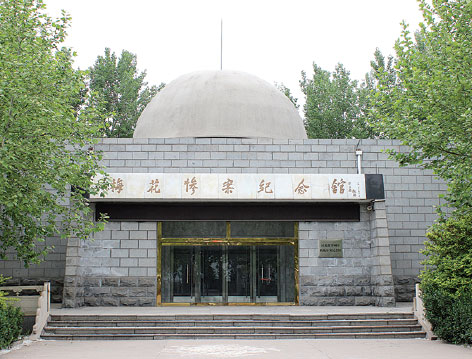The massacre that lit the flame of resistance
Updated: 2015-07-09 07:49
By Zheng Jinran(China Daily)
|
||||||||
A killing spree in a small town in Hebei province in 1937 sparked a popular uprising against the Japanese occupation that quickly spread across northern China, as Zheng Jinran reports from Shijiazhuang.
As the only living survivor of a notorious wartime massacre in China, Fan Yuexiang, is always willing to tell people about her desperate experiences during four days of slaughter in Meihua, a town in Shijiazhuang, Hebei province.
"The details of those days are carved into my mind," the 85-year-old said. "Recalling the past often brings nightmares, as if I were back at the massacre again, but I want to tell people to remind them about those wartime tragedies."
According to documents from the Meihua government, the slaughter occurred between Oct 12 and 15, 1937, just three months after the Lugouqiao Incident, also known as the Marco Polo Bridge Incident. Many historians regard the incident, during which Chinese and Japanese troops fought on the streets of Beijing, as the beginning of Japan's invasion of China and the flashpoint that started the War of Resistance against Japanese Aggression (1937-45).
Following the incident, the Japanese quickly invaded the central part of Hebei, which surrounds Beijing, and approached Meihua on Oct 11.
On the same night, Lyu Zhengcao led a team of Kuomintang, or Nationalist, soldiers to fight the Japanese at Meihua, which was chosen because of its geographical advantages and the high walls that surrounded it. More than 800 Japanese soldiers were killed or wounded during the offensive, the first time that they had suffered heavy losses, according to Lyu's memoir, which was published in 1988.
After the battle, Lyu decided to lead his team south and join with other Chinese troops to repel the advancing Japanese reinforcements. Before he left Meihua, Lyu warned the residents to flee the town to avoid possible revenge attacks by the Japanese.
Fan recalled how her father, a wealthy businessman, refused to leave because he did not believe the Japanese troops would kill civilians. Many other residents stayed too - some because they had decided the danger wasn't too great, but others simply hadn't heard Lyu's warning, according to local government documents.
Early on the morning of Oct 12, about 5,000 Japanese soldiers entered the town and began slaughtering the residents, most of whom were still asleep, to prevent them joining the Chinese troops.
"I saw them take my father away when he went out to check the situation, and I saw them shoot some residents," Fan said. Her mother took Fan, then just 7, to a nearby tavern, where they hid out for three days without food or water.
Fan said she would never forget the rivers "painted red with blood" or the sight of the bodies piled in the streets, and around ponds and other parts of the village. "It was like hell," she recalled.
Her 14-year-old brother was trapped in a yard with dozens of other residents. The Japanese troops mounted the walls and began shooting, using the civilians for target practice, but Fan's brother survived by escaping through a door as the troops took a break, she said.
Some of Fan's other relatives were not so fortunate - one of her aunts was raped before being killed - and the family was broken after the massacre. All their wealth was gone and everything was ruined, she said.
The Japanese shot 45 residents and tossed their bodies into a well in the eastern part of the town, before beheading 63 people at the edge of a nearby pond, according to Gao Lei, who works at the Meihua Massacre Memorial Hall, which opened in 1958 on a site close to the scene of the killings, but was moved and rebuilt in Shijiazhuang in 1998.
The death toll was 1,547, roughly 60 percent of Meihua's population at the time, Gao said. However, that figure doesn't include people from outside the town who were killed, so the true figure is likely to be higher.
The fightback begins
"The bloody slaughter revealed the brutal nature of the Japanese troops and woke the residents from a dream that civilians would be excluded from the war," said Lyu Tongyu, the son of commander Lyu.
The massacre backfired on the Japanese; rather than forcing the public into cowed compliance, the huge loss of civilian life ignited fierce resistance in the central Hebei region as residents organized themselves into teams to fight and harass the Japanese for the next eight years, the 73-year-old said.
A month after the massacre, a group organized by Ma Yutang, a Communist Party member, recaptured Gaocheng county in Hebei (now part of Shijiazhuang city), but Meihua remained occupied for a further eight years, according to the government documents.
Spurred by Ma's success, local residents across Gaocheng began forming local militias to fight the Japanese, while noncombatants provided support in the form of food and other essential materials.
Lyu Zhengcao and his troops also pursued a promising path after leaving Meihua. According to Lyu's memoir, he led his group to the east, arriving in Xiaoqiao, a town in Hebei's Zhaoxian county, late on Oct 12. However, when the Kuomintang commanders ordered Lyu to retreat instead of engaging the enemy, he and his troops decided to break with the Nationalists and become a guerrilla outfit, operating in the north of the province.
Having taken the first step, the former Kuomintang troops joined the Communist forces, and by 1938 their numbers had swollen to more than 100,000.
The group was a major force in the Central Hebei Anti-Japanese Base Area, according to Lyu Tongyu, who, in 1983, joined with other descendents of the soldiers to found the War Association of Central Hebei, which researches the condition of the province during wartime and the development of several anti-Japanese base areas.
The association has collected as many records and other materials as possible, and frequently visits famous sites and regions, including Meihua, which holds an important place in history because of the subsequent actions of Lyu Zhengcao and his troops. Gao, of the mass-acre museum, said Lyu selected Meihua as one of his bases and as a starting point for the battles that followed, and he always cared about the town's development.
Emotional returns
In June 1985, Lyu Zhengcao, then 81, returned to Meihua and spoke with survivors of the massacre. The occasion was informal, "not an inspection as a leader, but a visit to families," according to the general, a Liaoning province native and a vice-chairman of the Chinese People's Political Consultative Conference, the country's top political advisory body.
Fan, the only living survivor, said: "He thought his departure with his troops had left the town exposed to the brutal Japanese troops, and asked if we hated him.
"But I said we didn't hate him because it wasn't his fault, and we appreciated his efforts against the Japanese in the days before the massacre," she said, adding that many other survivors had expressed the same opinion.
Meihua also received another important guest. Shiro Azuma, a former Japanese soldier who had been in China as part of the occupying force, visited the town in April 2000 to apologize for the crimes committed by the Imperial Army during the war.
Although he wasn't involved in the slaughter at Meihua, Azuma, who died in 2006, admitted he had participated in the 1937 Nanjing Massacre, in which 300,000 Chinese were murdered.
After his initial confession, Azuma visited China seven times to apologize for the brutal behavior of the Japanese soldiers. When he visited Meihua, the then-88-year-old bowed to the survivors and residents in front of the massacre memorial hall and made a long, heartfelt apology, saying the crimes committed by Japanese soldiers in China had weighed heavily on his mind for many decades.
During a conversation with survivors later that day, Fan described to Azuma how the Japanese had killed her father and left her with deep scars that would never heal.
The elderly Japanese veteran understood that the majority of Chinese people would never forgive him, and that a large number of his compatriots would be upset by his actions, but he said it would not be possible for China and Japan to forge a new friendship based on trust and mutual respect until the crimes were confessed and his country acknowledged its dark wartime history.
Zhang Yu contributed to this story.
Contact the writer at: zhengjinran@chinadaily.com.cn
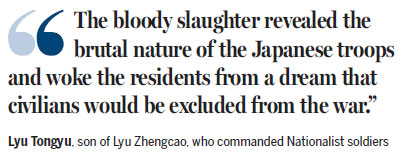
|
Lyu Zhengcao during the War of Resistance against Japanese Aggression (1937-45) in Anyi county, Hebei province. |
|
Lyu Zhengcao (second right, middle row), the leader of former Kuomintang troops that defended Meihua the day before the massacre, returned to the town in Shijiazhuang, Hebei province, in 1985, and had his photo taken with a group of survivors. Pictures Provided to China Daily |
|
Fan Yuexiang, 85, the only living survivor of the Meihua massacre, recalls events during the four days of slaughter in 1937. |
|
Meihua Massacre Memorial Hall, which was opened in Meihua in 1958, but was rebuilt in Shijiazhuang in 1998. |
(China Daily 07/09/2015 page6)
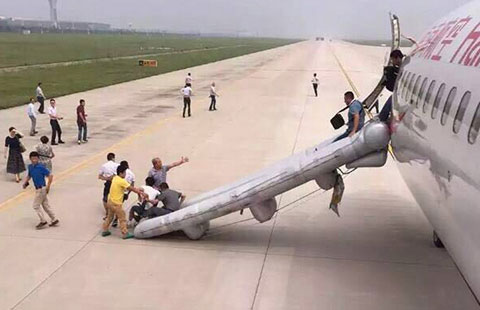
 Plane makes emergency landing after fire
Plane makes emergency landing after fire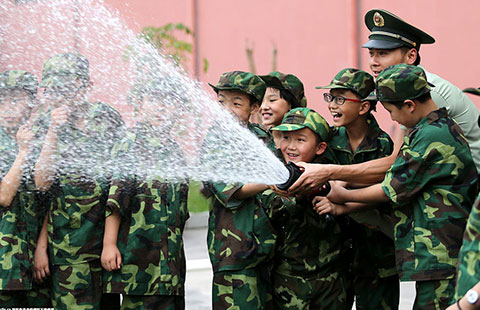
 Ten photos you don' wanna miss - July 8
Ten photos you don' wanna miss - July 8
 Female robot sings in Shanghai
Female robot sings in Shanghai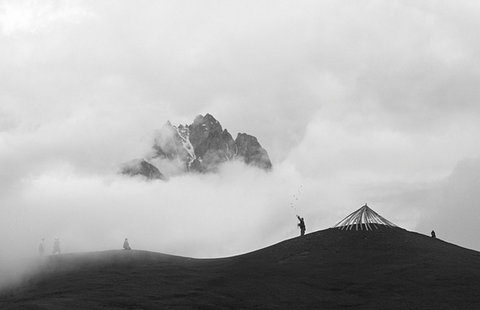
 Stunning images of Tibetan Buddhist pilgrims
Stunning images of Tibetan Buddhist pilgrims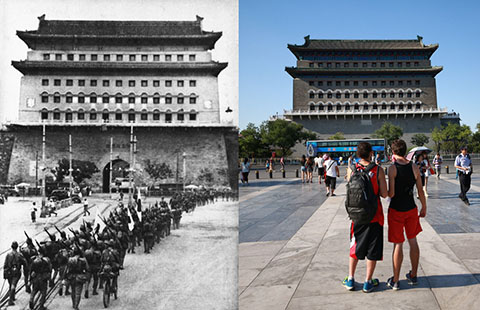
 Then and Now: Beijing’s historic sites as witnesses of war
Then and Now: Beijing’s historic sites as witnesses of war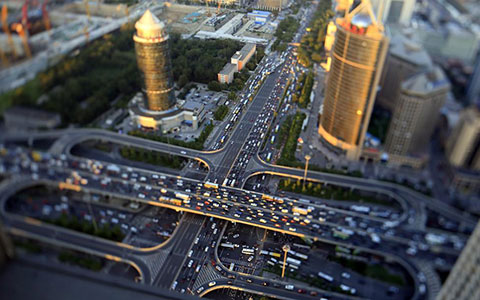
 In photos: China from above
In photos: China from above
 Serena Williams beats sister Venus to reach last eight
Serena Williams beats sister Venus to reach last eight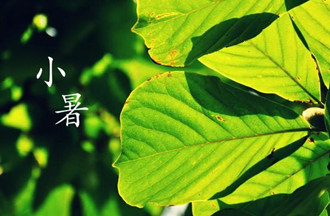
 Culture insider: Six things you may not know about Minor Heat
Culture insider: Six things you may not know about Minor Heat
Most Viewed
Editor's Picks

|

|

|

|

|

|
Today's Top News
SCO summit to take up India's membership
Xi, Putin agree to actions on connectivity proposals
China shares listed in US see selling
US orchestra to play China
China answers Clinton charges
President Obama addresses IS threat
China has ability to deal with risks to economy: premier
Govt prefers peaceful means in resolving maritime row: Envoy
US Weekly

|

|
